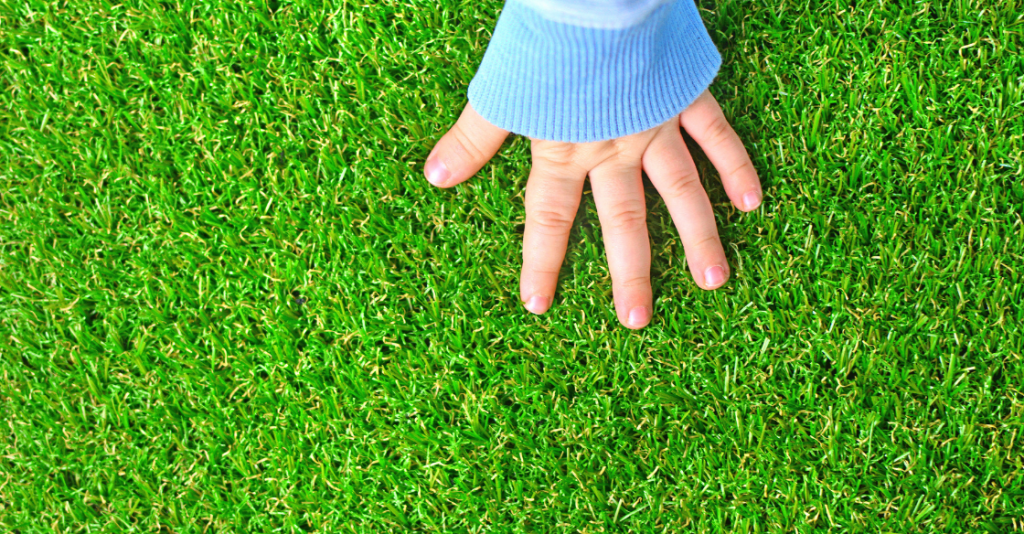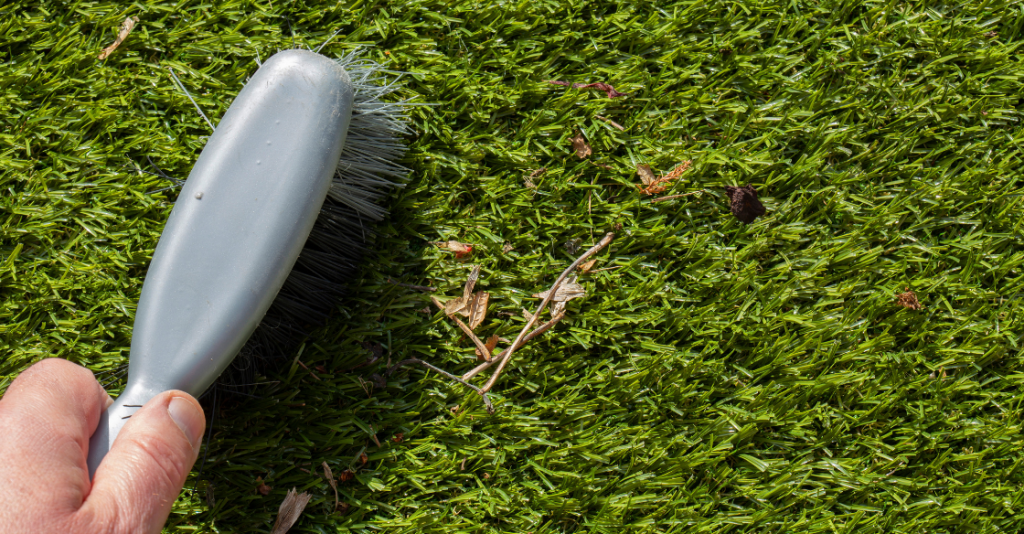Artificial grass offers Dallas homeowners a stunning, low-maintenance alternative to traditional lawns. With no need for mowing, watering, or fertilizing, synthetic turf stays lush and vibrant all year long. However, to keep your artificial grass in top condition and maximize its lifespan, regular maintenance is essential.
Check out these expert tips for Dallas residents to keep your artificial lawn looking great and working well.

Routine Maintenance for Artificial Grass
1. Brush Your Grass Regularly
Artificial grass can flatten over time because of foot traffic, weather, and general use. To keep it looking fresh and natural, regularly brush the blades upright. Use a broom with soft, natural bristles or a specialized turf brush for best results.
Tips for Dallas Homeowners:
- Wait two to three months after installation before brushing to allow the turf to settle.
- Brush high-traffic areas, such as pathways or play zones, monthly to maintain an even look.
2. Remove Debris and Manage Weeds
Even in Dallas, known for its warm and sunny climate, debris like leaves and twigs can accumulate on your artificial lawn. Use a leaf blower or rake to clear debris regularly.
For weed control:
- Artificial grass has a weed-resistant backing, but some weeds may still sprout around the edges.
- Use a water-based herbicide to safely eliminate weeds without damaging your turf.
3. Clean Stains and Sticky Residues Promptly
Artificial grass is stain-resistant but not entirely immune to messes. Accidents happen, and cleaning them quickly ensures your lawn stays spotless.
Cleaning Solutions for Common Stains:
- Mild Stains: Use soapy water and a sponge for spills like coffee or juice.
- Sticky Materials: Freeze substances like chewing gum with ice or an aerosol refrigerant, then gently scrape them off.
- Stubborn Stains: Apply a 3% ammonia solution to tackle grease, motor oil, or other persistent marks.

Seasonal Maintenance Tips
Dallas experiences seasonal changes, so it’s important to adapt your artificial grass care accordingly.
4. Winter Care
While heavy snow is rare in Dallas, occasional frost or snowfall may occur. Artificial grass is highly durable and can handle these conditions.
Winter Maintenance Tips:
- Avoid shoveling snow from your lawn to prevent blade damage.
- Let snow melt naturally; artificial turf drains water effectively.
- Inspect the turf nails and seams before winter to ensure they are secure.
5. Spring Refresh
Spring is an ideal time to give your artificial grass some extra attention. Brushing and clearing debris from high-traffic areas will prepare your lawn for increased use as the weather warms.
6. Summer Upkeep
Dallas summers are hot and dry, so ensure your artificial grass stays clean and comfortable:
- Brush frequently to rejuvenate flattened blades from summer gatherings.
- Use water to rinse the surface regularly, keeping it cool and free from dust.
7. Fall Maintenance
Fallen leaves and twigs from trees in autumn can accumulate on your turf. Regularly clear debris with a rake or leaf blower to prevent it from building up.
Special Care for Pet Owners
Artificial grass is perfect for pet owners in Dallas, offering durability and easy maintenance. With the right care, you can ensure your pet turf remains clean and odor-free.
8. Cleaning Pet Waste
Pet waste cleanup is straightforward with artificial grass:
- Urine: Rinse the area with water to prevent odors.
- Solid Waste: Allow it to dry before removal, then clean the spot with soapy water.
9. Use a Pet-Friendly Cleaner
For pet owners in Dallas, products like PE-51 are highly recommended. This cleaner uses enzymes to remove bacteria, odors, and germs from your turf, and it’s safe for pets and kids.
Why Maintain Your Artificial Grass?
Proper care ensures your artificial lawn maintains its appearance and functionality for years. With routine brushing, cleaning, and seasonal adjustments, your artificial grass can last up to 25 years. For Dallas homeowners, this means a beautiful, hassle-free lawn that enhances outdoor living year-round.
Looking for Professional Help?
Magnolia Turf Co. specializes in artificial grass solutions tailored for Dallas residents. Contact our team for expert advice, installation, or maintenance services. Allow us to assist you in keeping your lawn looking its best.
Reach out today for a free estimate and enjoy the best artificial grass experience Dallas has to offer!